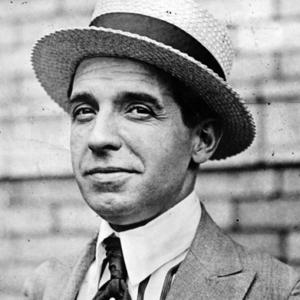History is peppered with an eclectic ensemble of fraudsters: the bold, the cunning, the rich, the poor. And sometimes – the downright incompetent.
The world’s first attempt at fraud was committed by Greek sea merchant Hegestratos, in the year 300 BC. After taking out an insurance policy against the vessel and its cargo of corn, he intended to sail out to sea for a few days, sink the ship, and make a quick escape via a lifeboat. When his angry crew discovered the plot, Hegestratos panicked and jumped overboard, subsequently drowning.
The tall tales that follow do not disappoint, and if the history of fraud teaches us anything, it’s that when it sounds too good to be true, it probably is.
Skull-duggery
Turns out tricking the Keeper of Geology at the UK’s Natural History Museum is relatively straight forward. In 1912, amateur archaeologist Charles Dawson discovered a section of human-like skull that he claimed was the “missing link” between human and ape.
Decades later, technological developments revealed that Dawson’s find came from not one but two species – a human and an ape – and that he had gone so far as to file down the ape skull’s teeth in an effort to make them appear human.
But credit where credit is due – Dawson is one of the few fraudsters who did it to further his career, rather than for financial gain. So that’s something.

Ponzi pontificates
The miscellaneous antics of one Charles Ponzi in 1920 saw the Ponzi name attributed to what is now one of the most recognised forms of fraud.
A Ponzi scheme is best defined by the idiom “to rob Peter to pay Paul”. Essentially, money is taken from a new investor to pay a previous one, ensuring that the perpetrator’s promises of high returns are fulfilled. Via the Securities Exchange Company, established by Ponzi in 1919, he cheated thousands of investors out of USD$15 million, promising a (somewhat unbelievable) return on investment of 50% in just 45 days.
Ponzi enjoyed a brief stint of fame and decadent living until his publicist, William McMasters, revealed his fraud and outed him to the Boston Post. He died following a stroke at a charity hospital in Rio de Janeiro with just USD$75 to his name.

For Sale: The Eiffel Tower
In 1925, serial fraudster Victor Lustig pulled off his boldest scam – selling the Eiffel Tower. Lustig traveled to Paris armed with a set of specially commissioned stationery, which bore the official seal of the French Government.
Posing as a government official, he gathered the biggest players in the French scrap metal industry and convinced them that engineering faults and costly repairs meant the Eiffel Tower would be torn down and sold to the highest bidder.
What’s more – this particular scam was executed by Lustig more than once, who enjoyed boasting about his achievements and even went on to produce a list of rules for aspiring con artists.
Lustig was arrested in 1935 and sentenced to 20 years on Alcatraz Island.

The fraudster catching other fraudsters
Frank Abagnale, Jr. was an expert con artist, and as dashing as Leonardo DiCaprio depicted him in the movie Catch Me If You Can.
Between the ages of 16 and 21, New York-born Abagnale assumed eight identities, including a pilot, a doctor, an undercover prison inspector at a Federal Detention Centre, and an FBI agent.
Abagnale estimates he forged USD$2.5 million worth of cheques before a game of cat and mouse with the authorities led to his capture in France in 1969. Abagnale earned an early release from prison on the condition that he would assist law enforcement authorities by catching other fraudsters like him.
Today, his business Abagnale & Associates has seen 14,000 organisations implement his anti-fraud measures, and he continues to support the FBI with their fraud prevention efforts.

The greatest party that never happened
Promoted by the likes of Kendall Jenner and Bella Hadid, Billy McFarland’s Fyre Festival was billed as a glamorous party on a deserted island in the Bahamas. Tickets cost up to $100,000 and guests were promised luxury accommodation and “the best in food, art, music and adventure”.
Instead – they turned up to rain-soaked mattresses on the floor, cheese on stale bread, and had their luggage chucked into an unlit car park.
McFarland scammed 5000 people out of USD$26 million, thanks to a gross underestimate of the time and effort needed to pull the event off. The saddest part, however, was the financial damage that Billy wreaked on the local community, who spent long days and sleepless nights trying to build what he requested. One local restaurant owner admitted to putting up $50,000 of her life savings for the festival’s catering in the build-up to the event.
McFarland was sentenced to six years in prison in October 2018, and instructed to pay more than USD$26 million to investors and customers.

So…while these stories are fun to pass around the dinner table, you can take comfort in the fact that they’re becoming less and less prevalent.
It’s easier now to validate the credentials and identity of potential business partners, customers and employees. By engaging a background screening service like CVCheck, you can verify your experience and build trust between parties, so that tall tales become fun stories to swap, and not to be feared!




